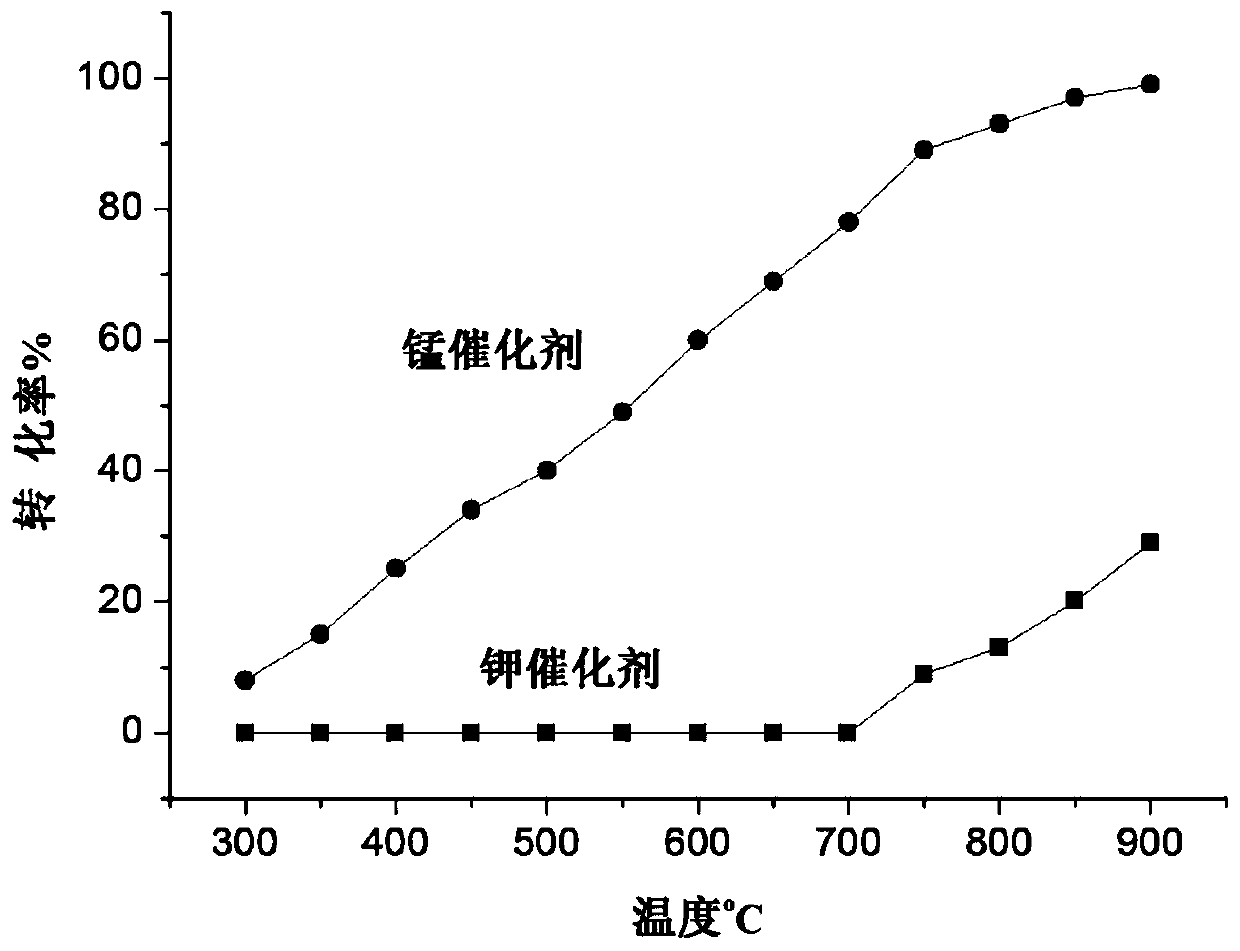Application of a Supported Catalyst in Trifluoromethane Cracking
A supported catalyst, trifluoromethane technology, applied in physical/chemical process catalysts, metal/metal oxide/metal hydroxide catalysts, organic chemistry, etc., can solve the problem of high conversion rate, few target products and low cracking efficiency and other problems, to achieve the effect of high temperature resistance and strong acid corrosion resistance, improving corrosion resistance and improving use stability
- Summary
- Abstract
- Description
- Claims
- Application Information
AI Technical Summary
Problems solved by technology
Method used
Image
Examples
Embodiment 1
[0027] Manganese chloride is used as the precursor, and the manganese catalyst supported on activated carbon is prepared by acid treatment:
[0028] The activated carbon is treated with 30% nitric acid by mass concentration at 90°C for 5h, filtered and washed with water to neutrality, and the filter cake is baked at 120°C for 12h to obtain acid-treated activated carbon;
[0029] Impregnation method or immersion fluorination method: Put 9.82g of manganese chloride into 10mL of deionized water, heat and stir to dissolve evenly, add 10g of acid-treated activated carbon carrier, stir well, stand for 12h, then dry at 80℃ for 12h, put Put it into a quartz boat, roast with 100mL / min nitrogen at 500℃ for 4h to obtain activated carbon-supported manganese solid, then soak the solid with a mass concentration of 10% HF aqueous solution for 1h, filter, wash with water, and dry at 80℃ to obtain activated carbon-supported fluoride Manganese catalyst, the manganese mass loading is 30%.
[0030] Pre...
Embodiment 2
[0035] The catalyst obtained in Example 1 was used to test the catalytic activity of trifluoromethane cracking at different temperatures: 3g of the acid-treated activated carbon-supported manganese catalyst obtained in Example 1 was filled into the reaction tube, and trifluoromethane was introduced at a flow rate of 50 mL / min. Then the reaction tube is heated from 300°C to 900°C by program, and after every 50°C temperature rise, the temperature is kept constant for half an hour, and then sampled by gas chromatography for analysis. According to the change of the peak area of trifluoromethane before and after the reaction, the conversion rate from 300°C to 900°C was calculated; the selectivity was obtained by comparing the peak area of tetrafluoroethylene and hexafluoropropylene standard products. The result is shown in the figure.
Embodiment 3
[0037] The catalyst obtained in Example 1 was used to test the catalytic activity of trifluoromethane cracking at different space velocities: 3 mL of the acid-treated activated carbon-supported manganese catalyst obtained in Example 1 was filled into the reaction tube, and trifluoromethane was introduced, the flow rate was adjusted, and the space velocity was controlled. It is 100 / h-9000 / h, and then the temperature of the reaction tube is raised to 600°C for half an hour, and then sampled by gas chromatography for analysis. According to the changes in the peak area of trifluoromethane before and after the reaction, the conversion rate at different space velocities was calculated; the selectivity was obtained by comparing the peak areas of tetrafluoroethylene and hexafluoropropylene standard products. The result is shown in the figure.
PUM
 Login to View More
Login to View More Abstract
Description
Claims
Application Information
 Login to View More
Login to View More - R&D Engineer
- R&D Manager
- IP Professional
- Industry Leading Data Capabilities
- Powerful AI technology
- Patent DNA Extraction
Browse by: Latest US Patents, China's latest patents, Technical Efficacy Thesaurus, Application Domain, Technology Topic, Popular Technical Reports.
© 2024 PatSnap. All rights reserved.Legal|Privacy policy|Modern Slavery Act Transparency Statement|Sitemap|About US| Contact US: help@patsnap.com










